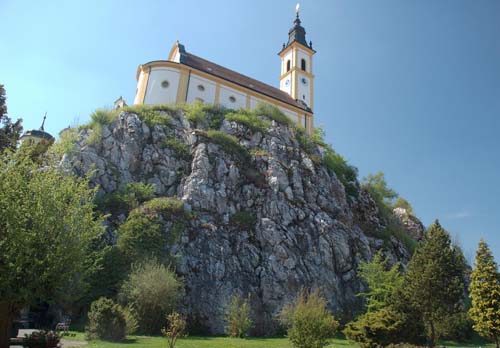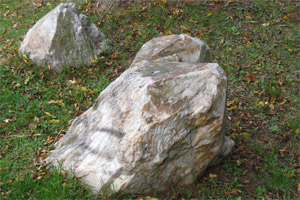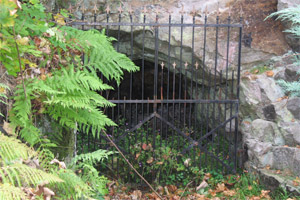The Kreuzberg in Pleystein
In the small town of Pleystein, Bavaria, Germany, a large outcrop of quartz, the Kreuzberg Mountain, arises approximately 35 meters above its surroundings. The rock, which is the core of a pegmatite-stock and Pleystein’s landmark, is made of massive smoky and milky quartz and was formed during the earth’s ancient times when melted rocks solidified. Above all, it is famous for its beautiful and rare minerals.
Pleystein’s Kreuzberg is a station of the “GEO-TOUR Granite ”, which was founded by the Geocentre Windischeschenbach in cooperation with the Bavarian state office for geology. The Kreuzberg has also been added to the list of Bavarian’s 100 most beautiful geotops. (Nr. 36, awarded September 19th 2004, Geotop-Nr.374A015).

source: GEOPARK Bayern
The Variscan Mountains
300 million years ago, 2 continents collided in the region of present-day Middle- and Western Europe and formed mighty folded mountains, the Variscan Mountains. Their rocks, which before had been located at the ground of the ocean between the continents, were dragged down into deep depths by the collision. Because of the high pressure and temperature down there, they have been deformed and even melted. Hot, liquid magma ascended where the earth’s crust was weak, got stuck beneath the earth’s surface and solidified there. That way, granite formations like the pegmatite-stock in Pleystein were formed.
The origin of the quartz rock
Over the course of millions of years, continuous movements in the earth’s crust segmented the Variscan Mountains into single massifs, our present-day highlands. Weathering and erosion have revealed the granite which, originally, had been crystallized deep down in the subsurface, and made it part of the earth’s surface. One example for this is the Kreuzberg, a hard quartz rock which hasn’t been bothered by erosion as much as its surrounding rocks.

source: GEOPARK Bayern
Pleystein’s Pegmatite
Pegmatite are part of a rather rare kind of rock, which is characterized by big-granular and huge-granular formations of minerals. Several years ago, two big Capped Quartzes (Crystals!) were put up in the area surrounding the Kreuzberg Mountain.

The Use of Pegmatite
As mentioned above, the Kreuzberg rock is made of massive smoky and milky quartz. It is famous, for occasionally large pieces of rose quartz have been found there. The almost vertical rock wall facing north-east has been formed during the exploitation of the quartz from 1851 until 1920 and is greatly admired today. Because the city of Pleystein – which means “city with the shiny stone” – didn’t want to lose its famous landmark it prohibited further exploitation in the year 1920.
An old mining gallery, which is now locked with an iron grate, still lends evidence to mining activities.

Your tasks:
1. What diameter is the bigger one of the two Capped Quartzes?
2. Name at least two areas of application in which the quartz was used as a raw material.
3. (additional logging requirement on voluntary basis) Together with your log entry publish a picture of you and your GPS in front of the mining gallery’s iron gate!
Please send the answers per email via my geocaching.com-profile or fill in the online form on our homepage!
Further links:
 A German version of this text is available on our homepage! - Auf unserer Homepage gibt es diesen Text auch auf Deutsch!
A German version of this text is available on our homepage! - Auf unserer Homepage gibt es diesen Text auch auf Deutsch!

